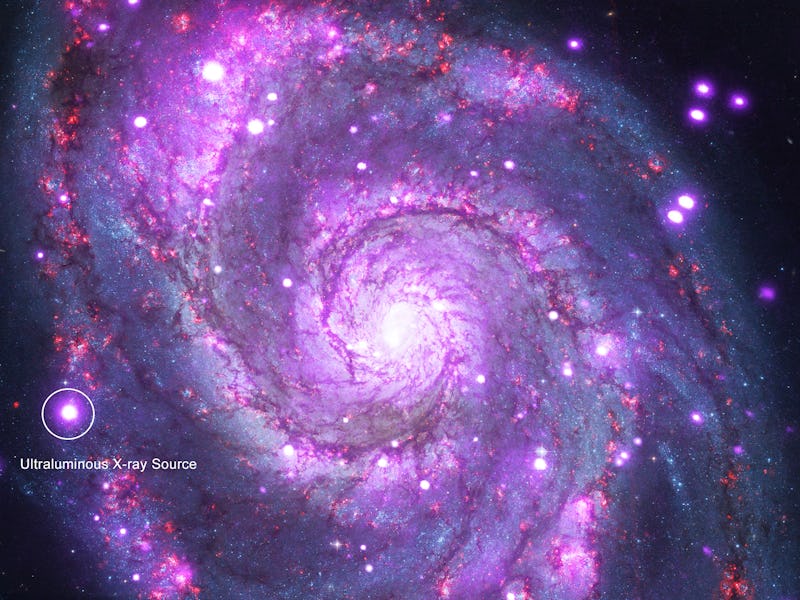Scientists Discover Stunningly Beautiful New Ultraluminous X-ray Source

Imagine a source of light somewhere in the universe so impossibly bright and radiant in X-rays that it equals the wavelengths of more than a million suns. Now, just for the sake of argument, imagine said light source — an ultraluminous X-ray source, or ULX, if you will — is only, say, 18 miles across. Surely no cosmos could be so wild and wonderful and ridiculous to actually include such a thing.
Wait, what’s that, NASA?
“A few ULXs, which glow with X-ray light equal in luminosity to the total output at all wavelengths of millions of suns, are even less massive objects called neutron stars. These are the burnt-out cores of massive stars that exploded.”
Yes, a handful of neutron stars — the husks of stars more massive than our sun but not necessarily big enough to collapse into black holes — are putting on light shows in the X-ray spectrum that defy any sort of human comprehension. And as an international team of researchers detail in the latest issue of Nature Astronomy, NASA’s Chandra X-ray Observatory has found a fourth such ULX in the Whirlpool Galaxy, otherwise known as M51.
You can see the image up above, but let’s pause for a second and take in the entire galaxy in its full glory.
As you can see, that light source on the edge of the Whirlpool Galaxy rivals that of the supermassive black hole at its center. How a single neutron star — even if it is so dense that a single teaspoon of it would weigh about two trillion pounds — ocould produce such an incredible display still isn’t entirely understood, especially when only four such neutron star ULXes have even been discovered. But astronomers have the beginnings of an answer, according to NASA.
“The intense gravity of the neutron stars pulls surrounding material away from companion stars, and as this material falls toward the neutron star, it heats up and glows with X-rays,” the agency explains. “As more and more matter falls onto the neutron star, there comes a time when the pressure from the resulting X-ray light becomes so intense that it pushes the matter away. Astronomers call this point — when the objects typically cannot accumulate matter any faster and give off any more X-rays — the Eddington limit. The new result shows this ULX is surpassing the Eddington limit for a neutron star.
Exactly how the star is managing to break this limit is unclear, but all those X-rays are proof positive it is doing exactly that. The researchers have some ideas as to how to study this problem further, including looking to gather more X-ray data from the Whirlpool Galaxy. The rest of us can probably just sit back and let our minds be blown by all that impossibly bright cosmic grandeur.